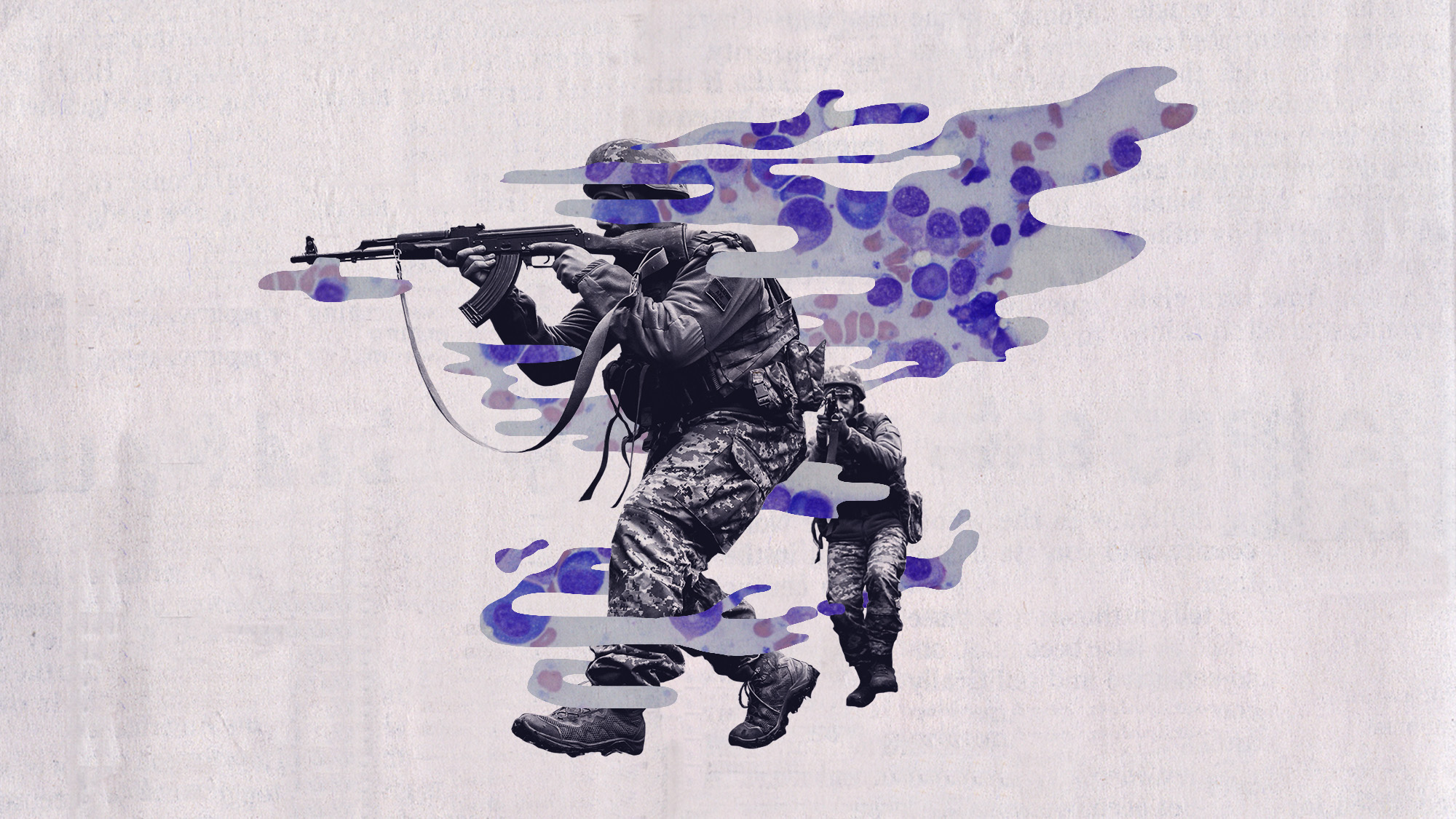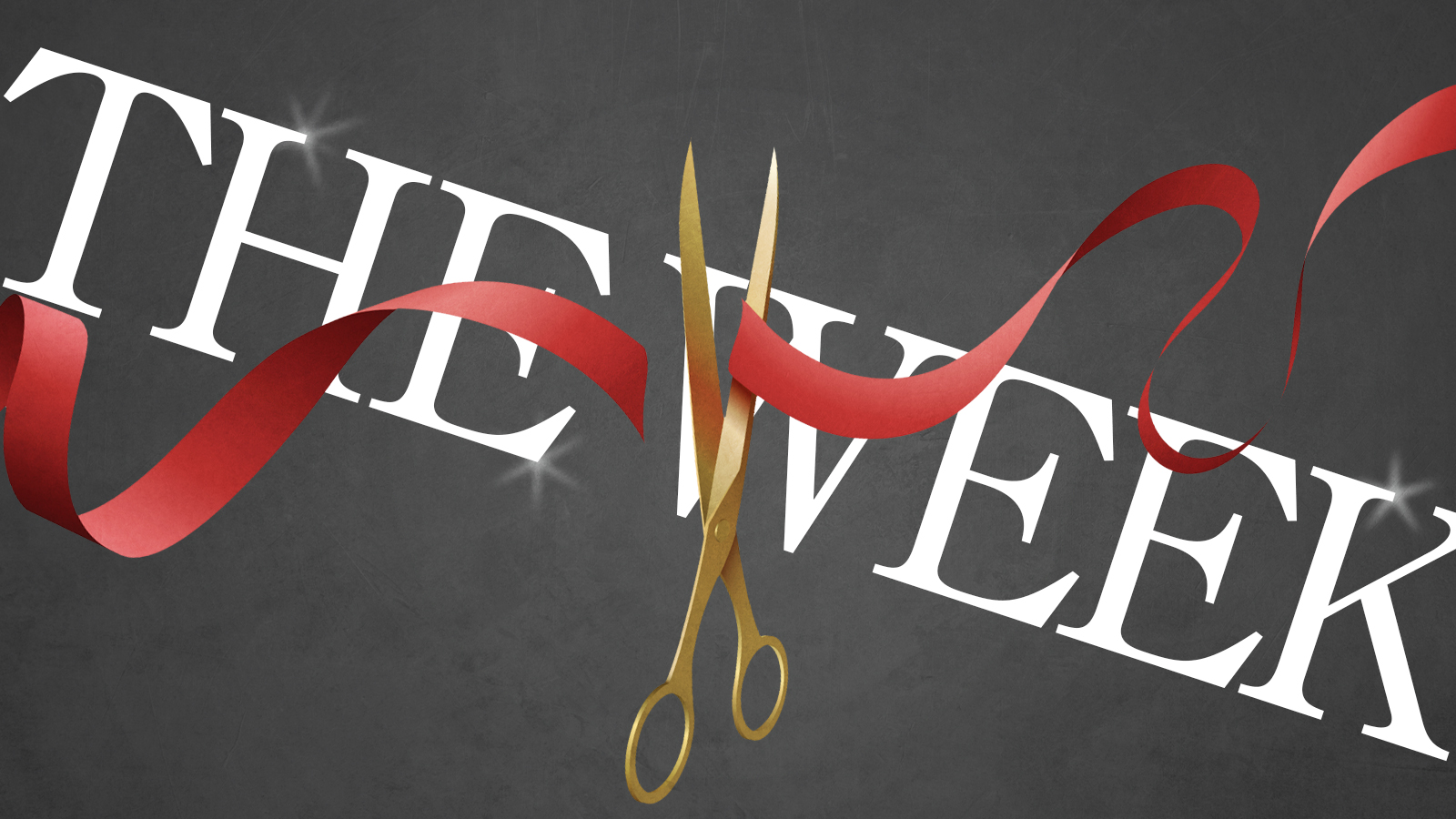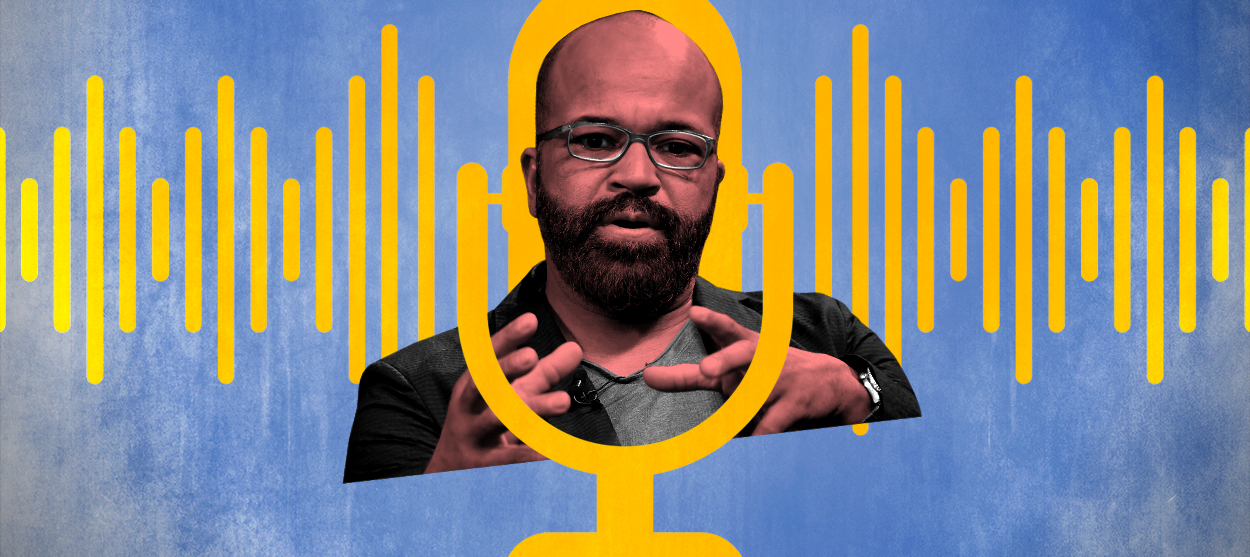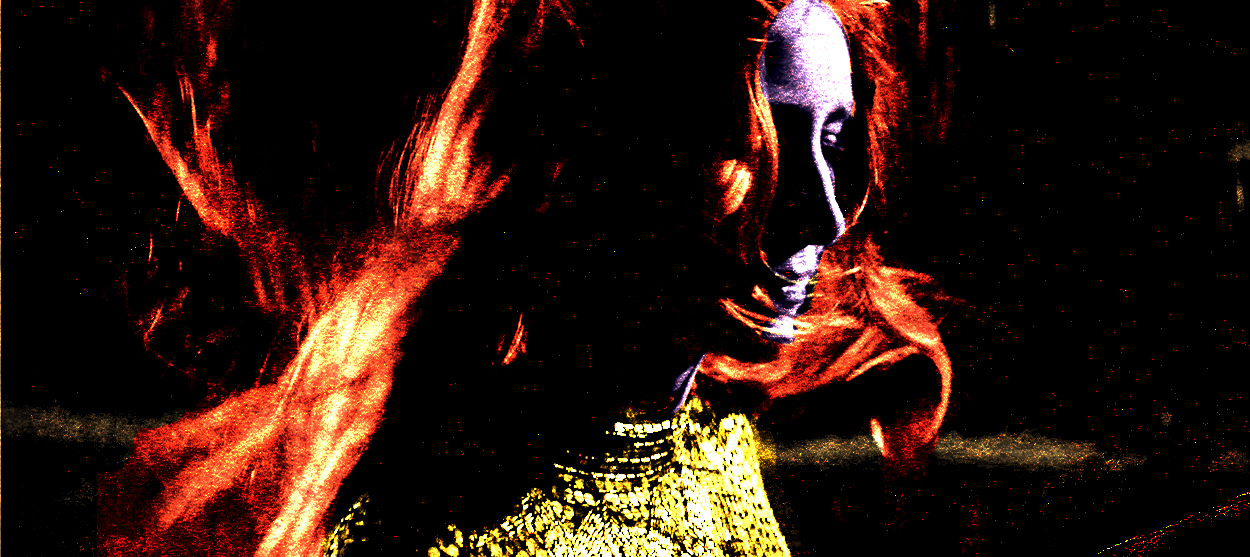Why the real winner of the Game of Thrones season finale was the music
Here's a step-by-step exploration of music's starring role in the season finale

One unexpected delight of "The Winds of Winter," the season six finale of Game of Thrones, was the eerie leisure of its opening. We so rarely get to see these characters alone, just thinking and feeling. Lena Headey's acting was jaw-droppingly rich without speaking a single line, an effect helped by Miguel Sapochnik, the director of "The Battle of the Bastards," who gave her space for reflection. (Long live Sapochnik, who brings as much artistry to contemplative scenes as he does to battle formations.) But the real winner of those first 15 minutes is the music. The poetic minutes leading up to Cersei's revenge owe a great deal to Sapochnik's skillful cinematic blazon of the principals who he shows in parts (a sleeve, a ring, a face) but it owes more to Ramin Djawadi's score. The musical direction puts this episode up there with the best stuff Game of Thrones has ever done.
To appreciate some of what Djawadi was doing in "Light of the Seven," the music accompanying the 15-minute build-up to the wildfire explosion, here's a step-by-step exploration of how music functioned in key moments, using music clips, sheet music, and screenshots (sadly, HBO didn't make public enough video). Feel free to follow along by watching these chunks of the episode — approximate time stamps are included below so you can — but the sound clips are there in case you don't have HBO on you.
1. The bell tolls (6:00-6:20)
The Week
Escape your echo chamber. Get the facts behind the news, plus analysis from multiple perspectives.

Sign up for The Week's Free Newsletters
From our morning news briefing to a weekly Good News Newsletter, get the best of The Week delivered directly to your inbox.
From our morning news briefing to a weekly Good News Newsletter, get the best of The Week delivered directly to your inbox.
Everyone is getting ready for the trial as the bell tolls. Their preparations are largely cosmetic: Tommen is putting on his crown, Margaery's hair being braided.
Musically speaking, a single bell is straightforward, even disappointingly minimalist. From a poetic perspective, it's creepy as hell; especially here, its simplicity and solemnity is deceptive. Both the bell's form and function will collapse by the end of this sequence. For now, though, it's establishing how sound works in this universe: There is order. Everyone is listening to the same thing at the beginning. Everyone has the same in-universe soundtrack and it's eerie in the monotonal way the bells that keep time tend to be.
[[{"type":"media","view_mode":"media_large","fid":"158255","attributes":{"alt":"","class":"media-image","height":"337","typeof":"foaf:Image","width":"600"}}]](Screenshot/HBO/Game of Thrones)
[[{"type":"media","view_mode":"media_large","fid":"158197","attributes":{"alt":"","class":"media-image","height":"337","typeof":"foaf:Image","width":"600"}}]](Screenshot/HBO/Game of Thrones)
A free daily email with the biggest news stories of the day – and the best features from TheWeek.com
[[{"type":"media","view_mode":"media_large","fid":"158199","attributes":{"alt":"","class":"media-image","height":"337","typeof":"foaf:Image","width":"600"}}]](Screenshot/HBO/Game of Thrones)
[[{"type":"media","view_mode":"media_large","fid":"158200","attributes":{"alt":"","class":"media-image","height":"337","typeof":"foaf:Image","width":"600"}}]](Screenshot/HBO/Game of Thrones)
Then it stops.
2. The haunting piano / Enter the Sept (7:03-7:30)
It's time for the trial. People start filing into the Sept: Margaery, Mace, and the High Sparrow assume their places. A gentle melody trickles out of a completely extradiegetic piano to announce that the hour of the trial is here. It's jarring — can you imagine a piano in Game of Thrones' universe? — and it splits the soundtrack from the world just as firmly as the bell brought both together. Let's call this Theme A.
Here's a transcription (courtesy of Taioo.net):
[[{"type":"media","view_mode":"250px_wide","fid":"158483","attributes":{"alt":"","class":"media-image","height":"36","typeof":"foaf:Image","width":"250"}}]]
Everyone gathers over these melancholic runs. It's fatalistic, funereal.
[[{"type":"media","view_mode":"media_large","fid":"158203","attributes":{"alt":"","class":"media-image","height":"337","typeof":"foaf:Image","width":"600"}}]](Screenshot/HBO/Game of Thrones)
Elegiac, even. Everyone sits.
Then the music goes silent, briefly. Margaery — who seems uniquely sensitive to the music in this sequence (she almost seems to hear it, or at least intuit the information the music is feeding us) — looks around the first time, noting Cersei and Tommen's absence.
3. Back to the Red Keep / Enter Cersei's theme (8:18-8:53)
The camera cuts back to the Red Keep, where Cersei is putting on her armor (there's no other word for that dress or the chain that goes across it). The music restarts with Theme B, a series of three repeating notes followed by a four note descending run that repeats. Here's that one (courtesy of this transcription):
[[{"type":"media","view_mode":"media_large","fid":"158324","attributes":{"alt":"","class":"media-image","height":"53","typeof":"foaf:Image","width":"600"}}]]
Notice that Theme A's still hanging around, but it's become an undercurrent: It's the accompaniment instead of the melody. The music that ushered everyone into the Sept (is this the High Sparrow's theme?) is subordinate to Theme B, which is arguably Cersei's plot anthem. We'll call it Cersei's Song for convenience.
I love this sequence for how gorgeously it renders Cersei's interiority. She's trapped. She's out of options. She's alone and bereaved, and she's going to do what she needs to do to save herself and her son and kill her enemies. Her actions here are less a product of ambition than necessity, and her silences reflect that. They're thoughtful and solemn and deliberate; she's switching out The Mother for The Warrior because she has no choice. While there is a hint of pleasure in all this — cf. Cersei's wine — I found the cartoonishly villainous "because I liked it" speech to be a clumsy bit of writing that did a disservice to the incredible texture Headey brought to these early moments. The deep melancholy of the score does more to illustrate Cersei's dire straits, and Sapochnik's direction shows the care with which she's assuming her new role.
[[{"type":"media","view_mode":"media_large","fid":"158205","attributes":{"alt":"","class":"media-image","height":"337","typeof":"foaf:Image","width":"600"}}]](Screenshot/HBO/Game of Thrones)
[[{"type":"media","view_mode":"media_large","fid":"158206","attributes":{"alt":"","class":"media-image","height":"337","typeof":"foaf:Image","width":"600"}}]](Screenshot/HBO/Game of Thrones)
[[{"type":"media","view_mode":"media_large","fid":"158207","attributes":{"alt":"","class":"media-image","height":"337","typeof":"foaf:Image","width":"600"}}]](Screenshot/HBO/Game of Thrones)
4. Enter the Little Birds (8:50-9:00)
The music pauses and when it resumes, Pycelle is cheating a prostitute to the tune of a new melody. Call it Theme C. It's almost nothing, a tinkly, minimalist three-note sequence on the piano. It's a song worthy of the Little Birds, so small and innocuous they barely register, but working in perfect synchrony. Call it the Bird Song.
Theme C (key is C-minor):

5. The Trial: Silence
Then we cut to the trial, which interrupts this ambitious and unnerving soundtrack. The trial is conducted without music, and its absence is nearly as eerie as its presence. It feels wrong. Yes, we hear the awful sounds of Loras gasping as his forehead is carved, but we have the sense that something important is being missed.
6. Back to the Sept and the Red Keep (13:26-13:53)
The camera cuts between the crowd in the Sept and the Tommen and Cersei in the Red Keep. Theme C returns at 13:26, and it's playing in both the Red Keep and the Sept this time. The Little Birds are spreading, Cersei is explicitly connected to their theme, and the Sept has (musically, at least) been infiltrated by their Bird Song.
"Alright," Tommen says. "I'm ready. I have to go. I'm late for the trial." Poor Tommen.
[[{"type":"media","view_mode":"media_large","fid":"158210","attributes":{"alt":"","class":"media-image","height":"337","typeof":"foaf:Image","width":"600"}}]](Screenshot/HBO/Game of Thrones)
7. Margaery confronts the High Sparrow (14:14-15:10)
When Margaery confronts the High Sparrow about his broken promise (he had agreed not to mutilate Loras), something interesting happens: The music responds to his dishonesty. The second he replies "I've kept my word," Theme A restarts. It's becoming a hallmark of his complacency, his hypocrisy, and his doom. And when the High Sparrow orders Lancel to go escort Cersei from the Red Keep, what follows is 1. a distraction (he opts to hunt a Little Bird instead) and 2. the saddest, most gently scored chase sequence there has ever been. Only Margaery seems sensitive to these changes in register; only she responds with suspicion and dread.
8. A Little Bird traps Pycelle and his song changes (15:11-15:28)
A Little Bird lures Pycelle into a trap — he's in Theme B now. He's been promoted from Theme C, the Little Bird theme in which he first appeared. Understandably: The Little Birds have lured him into Cersei's song.
"Where is the king?" Pycelle asks.
[[{"type":"media","view_mode":"media_large","fid":"158305","attributes":{"alt":"","class":"media-image","height":"338","typeof":"foaf:Image","width":"600"}}]](Screenshot/HBO/Game of Thrones)
"Elsewhere, I'm afraid."
9. Qyburn apologizes / Theme C returns (15:52-16:08)
During Qyburn's quiet apology to Pycelle, Theme C comes back, small and spare. The Little Birds multiply in the background.
"Please, Grand Maester, I bear you no ill-will," Qyburn says. "Please forgive me if you can."
10. The Little Birds assemble for Cersei (16:18-16:33)
A knife comes out and so does a somewhat degraded (disembowelled?) version of Theme A, this time with vocals over it singing a repeated mournful sustained melody. We'll call it Theme D (the Laceration Lullaby). Note that the Little Birds assemble to this version of Theme A in much the way the Sparrows assembled in the Sept to try Cersei and Loras:
[[{"type":"media","view_mode":"media_large","fid":"158329","attributes":{"alt":"","class":"media-image","height":"70","typeof":"foaf:Image","width":"600"}}]]
[[{"type":"media","view_mode":"media_large","fid":"158307","attributes":{"alt":"","class":"media-image","height":"338","typeof":"foaf:Image","width":"600"}}]](Screenshot/HBO/Game of Thrones)
Cut to Lancel, being baited by another Little Bird, still with Theme B and the wailing vocals of Theme D:
[[{"type":"media","view_mode":"media_large","fid":"158309","attributes":{"alt":"","class":"media-image","height":"338","typeof":"foaf:Image","width":"600"}}]](Screenshot/HBO/Game of Thrones)
11. The Little Birds attack Pycelle (16:55-17:10)
When Qyburn tells Pycelle that "the old must be put to rest," the Laceration Lullaby gets loud and the cellos come in with Theme E. This theme is a doozy: Its triplets accelerate our sense of time. Cersei's Song ignites and chaos begins.
If Cersei has a Mad Queen Theme, it's Theme E, with its sinister running cellos. You can also hear Theme D (the vocals) morph, almost imperceptibly, into Theme B, Cersei's plot. Things are building.
(Theme E:)

[[{"type":"media","view_mode":"media_large","fid":"158224","attributes":{"alt":"","class":"media-image","height":"337","typeof":"foaf:Image","width":"600"}}]](Screenshot/HBO/Game of Thrones)
12. Lancel is stabbed (17:30-17:47)
ENTER THE ORGANS. They pick up the vocals and develop them into Theme F. Meanwhile Theme E — the cellos — runs in a frenzy of triplets underneath.
[[{"type":"media","view_mode":"media_large","fid":"158310","attributes":{"alt":"","class":"media-image","height":"337","typeof":"foaf:Image","width":"600"}}]](Screenshot/HBO/Game of Thrones)
13. Back to the Sept, which has been infiltrated by Cersei's theme (18:14-18:37)
After the frenzy of organ and cello we snap back, at 18:14 — and this really feels like sonic whiplash — to a lone piano in the Sept. But something different: Theme A is gone. Theme B, Cersei's revenge, plays over the clueless Sparrows instead.
Margaery, the smartest character in this universe, senses it.
[[{"type":"media","view_mode":"media_large","fid":"158314","attributes":{"alt":"","class":"media-image","height":"337","typeof":"foaf:Image","width":"600"}}]](Screenshot/HBO/Game of Thrones)
14. Lancel spots the wildfire / Theme G erupts (18:37-19:18)
The second Lancel sees the candles in the wildfire at a distance, the cellos erupt into Theme G. It's similar to Theme E, but instead of being dominated by crunched sixths, we're in arpeggios covering a full octave:
[[{"type":"media","view_mode":"media_large","fid":"158315","attributes":{"alt":"","class":"media-image","height":"337","typeof":"foaf:Image","width":"600"}}]](Screenshot/HBO/Game of Thrones)
(Theme E is above. Theme G is below. They play well together:)
[[{"type":"media","view_mode":"250px_wide","fid":"158490","attributes":{"alt":"","class":"media-image","height":"60","typeof":"foaf:Image","width":"250"}}]]
Lancel crawls.
[[{"type":"media","view_mode":"media_large","fid":"158232","attributes":{"alt":"","class":"media-image","height":"337","typeof":"foaf:Image","width":"600"}}]](Screenshot/HBO/Game of Thrones)
15. Something is wrong (19:26-19:50)
Margaery confronts the High Sparrow and tells him they need to leave.
She's right, of course: The various strands of Cersei's musical plot are intertwining. The cellos of Theme G leak through over the distant piano of Theme B, Cersei's Song (which had already infiltrated the Sept, but alone). Remember the sonic contrast between the crazy organs (as Lancel and Pycelle got stabbed) and the calm of Cersei's Song in the Sept at 18:14? Now cello Themes E and G are bleeding into the Sept as well; the sounds between the underground wildfire repositories where Lancel is struggling and the Sept above are merging. Nothing is soundproof.
"Forget about the bloody gods and listen to what I'm telling you," Margaery says. "Cersei understands the consequences of her absence and she is absent anyway. Which means she does not intend to suffer those consequences. The trial can wait. We all need to leave."
16. The wildfire / The organ enters (19:52-20:16)
When Lancel reaches the candles in the wildfire, the organ floods in, playing a sort of mashup of Theme D (the vocals from the Little Bird stabbings earlier) with hints of B while the cellos play Theme G:
The violins join in with Theme E (the Mad Queen theme), taking over from the cellos at 20:12. The eerily separate tracks we've so painstakingly trained to hear are getting harder to distinguish.
Margaery tries to break through the Sparrows. The cellos switch to a new theme. Theme I. It's frenzied. But Theme B is still playing — it's repetitive and insistent and needlessly prominent, a bit like the High Sparrow. Then Theme I wins and climbs:
17. The final escalation (20:54-21:07)
[[{"type":"media","view_mode":"media_large","fid":"158245","attributes":{"alt":"","class":"media-image","height":"337","typeof":"foaf:Image","width":"600"}}]](Screenshot/HBO/Game of Thrones)
Then: silence.
18. The explosion
[[{"type":"media","view_mode":"media_large","fid":"158247","attributes":{"alt":"","class":"media-image","height":"337","typeof":"foaf:Image","width":"600"}}]](Screenshot/HBO/Game of Thrones)
[[{"type":"media","view_mode":"media_large","fid":"158249","attributes":{"alt":"","class":"media-image","height":"337","typeof":"foaf:Image","width":"600"}}]](Screenshot/HBO/Game of Thrones)
[[{"type":"media","view_mode":"media_large","fid":"158251","attributes":{"alt":"","class":"media-image","height":"337","typeof":"foaf:Image","width":"600"}}]](Screenshot/HBO/Game of Thrones)
[[{"type":"media","view_mode":"media_large","fid":"158252","attributes":{"alt":"","class":"media-image","height":"337","typeof":"foaf:Image","width":"600"}}]](Screenshot/HBO/Game of Thrones)
19. The bell rings twice (21:39-21:42)
The bell comes back onscreen, closing a bracket on the single note that started this episode. This time, it plays two notes instead of one:
And we're out.
Every time something changed in this sequence — whether the organ took over the piano part, or the piano took over the cello part, or an arpeggio stretched into an octave, or a character graduated from Theme C to Theme B (sorry, Pycelle) — every small change denoted an escalation. It's gorgeous work, incremental and sneaky and utterly effective.
20. Silence
It's significant, too, that everything after this happens in ambient silence: Tommen's suicide, Cersei's viewing of his body, her torturing of the nun. As when a bomb goes off, there's a long, shocked silence in the aftermath.
21. The Stark theme (1:05:14-1:06:04)
We're going to take a quick Stark detour before returning to Cersei's coronation, which makes good use of the musical developments that came before.
Of all the family leitmotifs, the Stark theme has always been closest to the Game of Thrones theme that plays over the opening credits. But I can't remember the last time the show's anthem made this prominent an appearance — it really becomes indistinguishable from the Stark theme as the Northerners hail Jon the King of the North. In an episode that finally admits R + L = J, the music legitimizes Jon Snow as a Stark in ways that neither Sansa nor even Lady Lyanna Mormont can. It's as strong an endorsement of the Starks (and Jon's claim) as you could ever hope to get.
[[{"type":"media","view_mode":"media_large","fid":"158259","attributes":{"alt":"","class":"media-image","height":"337","typeof":"foaf:Image","width":"600"}}]](Screenshot/HBO/Game of Thrones)
[[{"type":"media","view_mode":"media_large","fid":"158260","attributes":{"alt":"","class":"media-image","height":"337","typeof":"foaf:Image","width":"600"}}]](Screenshot/HBO/Game of Thrones)
[[{"type":"media","view_mode":"media_large","fid":"158261","attributes":{"alt":"","class":"media-image","height":"337","typeof":"foaf:Image","width":"600"}}]](Screenshot/HBO/Game of Thrones)
[[{"type":"media","view_mode":"media_large","fid":"158262","attributes":{"alt":"","class":"media-image","height":"337","typeof":"foaf:Image","width":"600"}}]](Screenshot/HBO/Game of Thrones)
[[{"type":"media","view_mode":"media_large","fid":"158263","attributes":{"alt":"","class":"media-image","height":"337","typeof":"foaf:Image","width":"600"}}]](Screenshot/HBO/Game of Thrones)
[[{"type":"media","view_mode":"media_large","fid":"158264","attributes":{"alt":"","class":"media-image","height":"337","typeof":"foaf:Image","width":"600"}}]](Screenshot/HBO/Game of Thrones)
I was tickled, too, at how perfectly the more sinister parts of the Game of Thrones main theme mapped onto close-ups during this scene. Take this shot of Sansa smiling — she's apparently pleased that Jon has been embraced by the northern lords (this episode confirmed that, despite her wisdom not to trust Littlefinger, she is indeed mostly Dim Sansa).
[[{"type":"media","view_mode":"media_large","fid":"158265","attributes":{"alt":"","class":"media-image","height":"337","typeof":"foaf:Image","width":"600"}}]](Screenshot/HBO/Game of Thrones)
But when the music goes into that low ominous sequence at the very end, her gaze turns toward the camera — towards us, that is — effectively turning us into Littlefinger, whose eye she catches.
[[{"type":"media","view_mode":"media_large","fid":"158267","attributes":{"alt":"","class":"media-image","height":"337","typeof":"foaf:Image","width":"600"}}]](Screenshot/HBO/Game of Thrones)
That final turn in the main theme at 1:05:50 coincides with this image of Littlefinger looking not at all happy.
[[{"type":"media","view_mode":"media_large","fid":"158268","attributes":{"alt":"","class":"media-image","height":"337","typeof":"foaf:Image","width":"600"}}]](Screenshot/HBO/Game of Thrones)
And that incredible percussive ending of the main theme — that moment that for viewers signals that the credits are finally over and the show is about to start — coincides with Sansa's expression changing as she recognizes the danger:
[[{"type":"media","view_mode":"media_large","fid":"158269","attributes":{"alt":"","class":"media-image","height":"337","typeof":"foaf:Image","width":"600"}}]](Screenshot/HBO/Game of Thrones)
The music continues just long enough to take us to the Lannisters — specifically, to Jamie:
[[{"type":"media","view_mode":"media_large","fid":"158270","attributes":{"alt":"","class":"media-image","height":"337","typeof":"foaf:Image","width":"600"}}]](Screenshot/HBO/Game of Thrones)
It's gone by the time Jamie sees the wreckage: The Lannister music tells a very different story from the Stark score in this episode.
[[{"type":"media","view_mode":"media_large","fid":"158271","attributes":{"alt":"","class":"media-image","height":"337","typeof":"foaf:Image","width":"600"}}]](Screenshot/HBO/Game of Thrones)
That brings us to the coronation.
22. Cersei's walk down the aisle and the failed Rains of Castamere (1:07:48-1:08:00)
We're expecting the Lannister theme, the Rains of Castamere, to play here. (Cersei has lectured Margaery about the warlike overtones of her family anthem before.) The cellos throb almost as if in pain while Cersei walks down the aisle. It feels like they're trying to gather the surrounding chaos into the usual family theme, and they do — they do find their way into the first few notes of The Rains of Castamere — but Qyburn interrupts to crown Cersei and announce her as the new ruler of King's Landing.
23: Cersei sits on the throne/ The Mad Queen theme (1:08:00-1:08:29)
The cellos try again: They resume a heavy, slow version of the Rains of Castamere, but it snaps. There is no Theme B this time, no hint of the melody we've come to associate with Cersei's plot. What there is, at 1:08:02, is an outbreak of spry, frantic triplets from Theme E — the Mad Queen cellos from before the explosion — and Theme I, the cello runs that built to the explosion itself. There is no piano. The meditative, trapped Cersei with whom we began the episode is gone. This one doesn't seem likely to be as careful a plotter; hard to imagine her making arrangements to spare what remains of her family, or to confine her wildfire to a specific target. Long live the Mad Queen.
And long live Ramin Djawadi.
Lili Loofbourow is the culture critic at TheWeek.com. She's also a special correspondent for the Los Angeles Review of Books and an editor for Beyond Criticism, a Bloomsbury Academic series dedicated to formally experimental criticism. Her writing has appeared in a variety of venues including The Guardian, Salon, The New York Times Magazine, The New Republic, and Slate.
-
 Antibiotic resistance: the hidden danger on Ukraine’s frontlines
Antibiotic resistance: the hidden danger on Ukraine’s frontlinesUnder The Radar Threat is spreading beyond war zones to the ‘doorstep’ of western Europe
-
 ‘Capitalism: A Global History’ by Sven Beckert and ‘American Canto’ by Olivia Nuzzi
‘Capitalism: A Global History’ by Sven Beckert and ‘American Canto’ by Olivia NuzziFeature A consummate history of capitalism and a memoir from the journalist who fell in love with RFK Jr.
-
 Who will the new limits on student loans affect?
Who will the new limits on student loans affect?The Explainer The Trump administration is imposing new limits for federal student loans starting on July 1, 2026
-
 Walter Isaacson's 'Elon Musk' can 'scarcely contain its subject'
Walter Isaacson's 'Elon Musk' can 'scarcely contain its subject'The latest biography on the elusive tech mogul is causing a stir among critics
-
 Welcome to the new TheWeek.com!
Welcome to the new TheWeek.com!The Explainer Please allow us to reintroduce ourselves
-
 The Oscars finale was a heartless disaster
The Oscars finale was a heartless disasterThe Explainer A calculated attempt at emotional manipulation goes very wrong
-
 Most awkward awards show ever?
Most awkward awards show ever?The Explainer The best, worst, and most shocking moments from a chaotic Golden Globes
-
 The possible silver lining to the Warner Bros. deal
The possible silver lining to the Warner Bros. dealThe Explainer Could what's terrible for theaters be good for creators?
-
 Jeffrey Wright is the new 'narrator voice'
Jeffrey Wright is the new 'narrator voice'The Explainer Move over, Sam Elliott and Morgan Freeman
-
 This week's literary events are the biggest award shows of 2020
This week's literary events are the biggest award shows of 2020feature So long, Oscar. Hello, Booker.
-
 What She Dies Tomorrow can teach us about our unshakable obsession with mortality
What She Dies Tomorrow can teach us about our unshakable obsession with mortalityThe Explainer This film isn't about the pandemic. But it can help viewers confront their fears about death.
